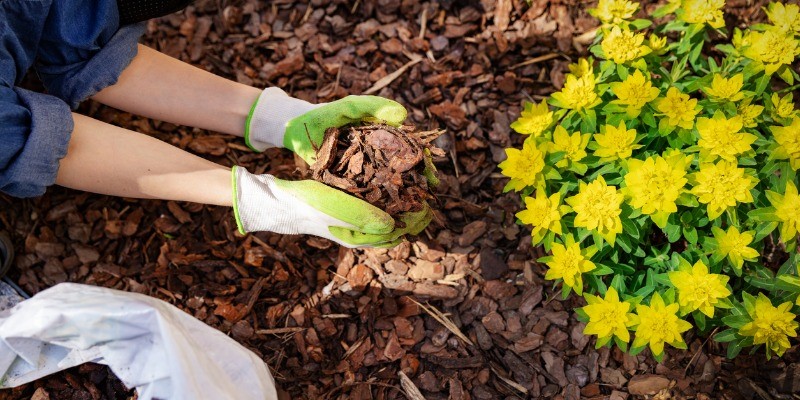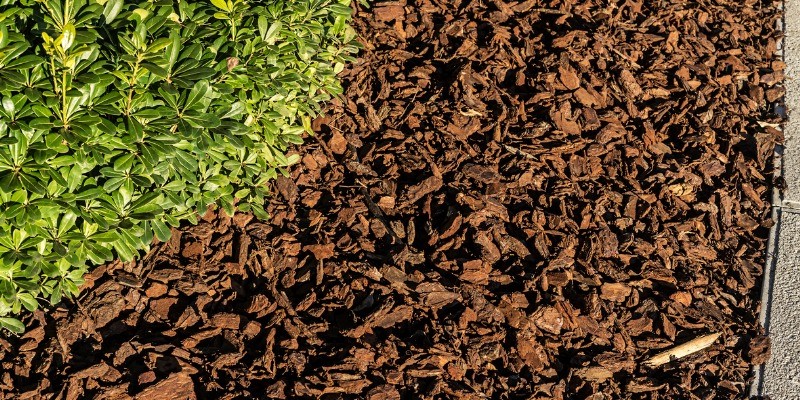Should You Mulch in the Fall?
If you’re new to mulching, you may wonder if you should mulch in the fall. While you may think that adding mulch to your garden beds or landscape seems counterproductive for the cooler seasons, laying mulch in the fall is actually the most beneficial in Canadian climates as it provides frost and winter protection for plants.
We’ll outline some of the biggest pros and cons of fall mulching below, as well as how to mulch before winter, to help you decide whether you’d like to add this task to your fall landscaping maintenance checklist.
Pros and Cons of Mulching in the Fall
The advantages of laying mulch in the fall are plentiful:
- It insulates the soil to help plants make it through our harsh winters
- Plant roots and bulbs react less to temperature swings that happen during winter
- Putting down mulch during the cooler fall months is a lot easier than doing it in hotter weather
- Most people cut back perennials for winter anyways, so you will have more space to lay the mulch
However, there are some disadvantages of choosing to mulch in the fall:
- If you don’t like cutting back perennials, laying the mulch may be a hassle
- If self-sowers are a big part of your various plantings, a fresh layer of mulch could possibly interfere with springtime seed germination
- Fall has less daylight, which means you may have to squeeze the job in on a weekend, which could cut into other activities[1]
- If snow falls before you get a chance to lay the mulch, you may end up with a big, snowy mulch pile on your property.
As long as you start early and germinate your seeds elsewhere, mulching plants for winter is a wise idea. The benefits to their long-term health and winter-resistance are just too good to pass up. So, how do you do it?
Tips to Lay Mulch in Fall
Here are some tips to help you get the most out of your fall mulching:
- Mulch type: Choose a quality mulch that will look great in your garden and last through the winter. If you’re considering organic mulch, ensure that it is treated prior to distributing. Regardless of which mulch you choose, a depth of 3-4 inches of mulch in your designated area will be sufficient. You can pick from our mulch catalogue the type you prefer: black, pine, cedar, red or economy mulch.
- Prepare beds: Remove all plant debris and pull any weeds that may still be around. Give your soil a good stir with either a rototiller or a hard rake.
- Start before frost: In southern Ontario, your mulching should be done in early October, as mid-October can bring early frost.
- Tree mulch: Don’t suffocate a tree with mulch. Remember, it’s trunk will get bigger. Pile the mulch a few inches from the trunk to make a “donut” as opposed to piling it up against the tree trunk which creates a “volcano” (the moisture from this can soften the bark and weaken it to pests and harsh weather).[1]
Now that you know whether or not you should mulch in the fall and a few tips on how to get started, make sure to contact the experts at Grand River Natural Stone for more information and to order your fall mulch today.
Related Topics:
- Should You Mulch in the Fall?
- 5 Reasons Why Natural Mulch is Better Than Rubber Mulch
- When To Buy Topsoil & Mulch, and How To Know Yours Is Good
[1] Beaulieu, David. How to Mulch Your Garden in Fall. The Spruce. June 26, 2019. Available online https://www.thespruce.com/should-i-mulch-my-garden-in-fall-2130801.
[1] Martens Forney, Julie. Forward, Mulch! DIY Network. Available online https://www.diynetwork.com/how-to/outdoors/gardening/fall-mulch.

